LOBE PIERCING GUIDE
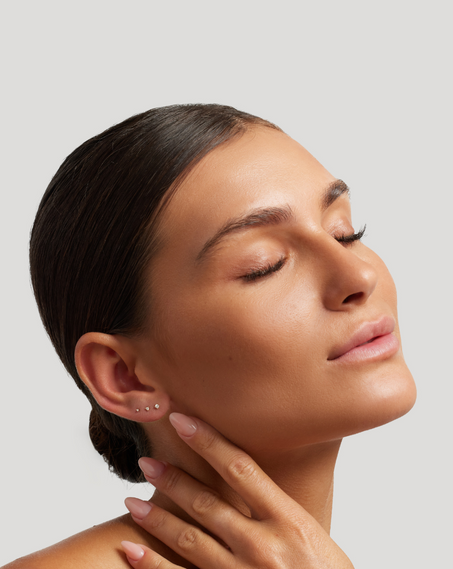
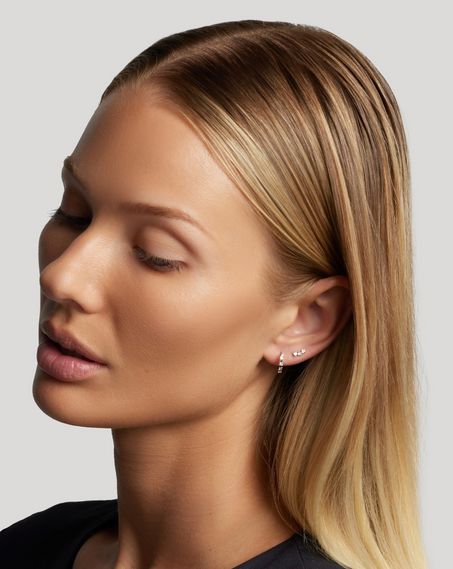
what is a lobe piercing?
Timeless, versatile, and effortlessly elegant — the lobe piercing is a classic for a reason. Positioned in the soft, lower section of the ear, it’s one of the most comfortable piercings to receive and suits every style and stage of your piercing journey.
In this guide, we’ll cover the different types of lobe piercings, the process, aftercare, healing, and how to style them beautifully.
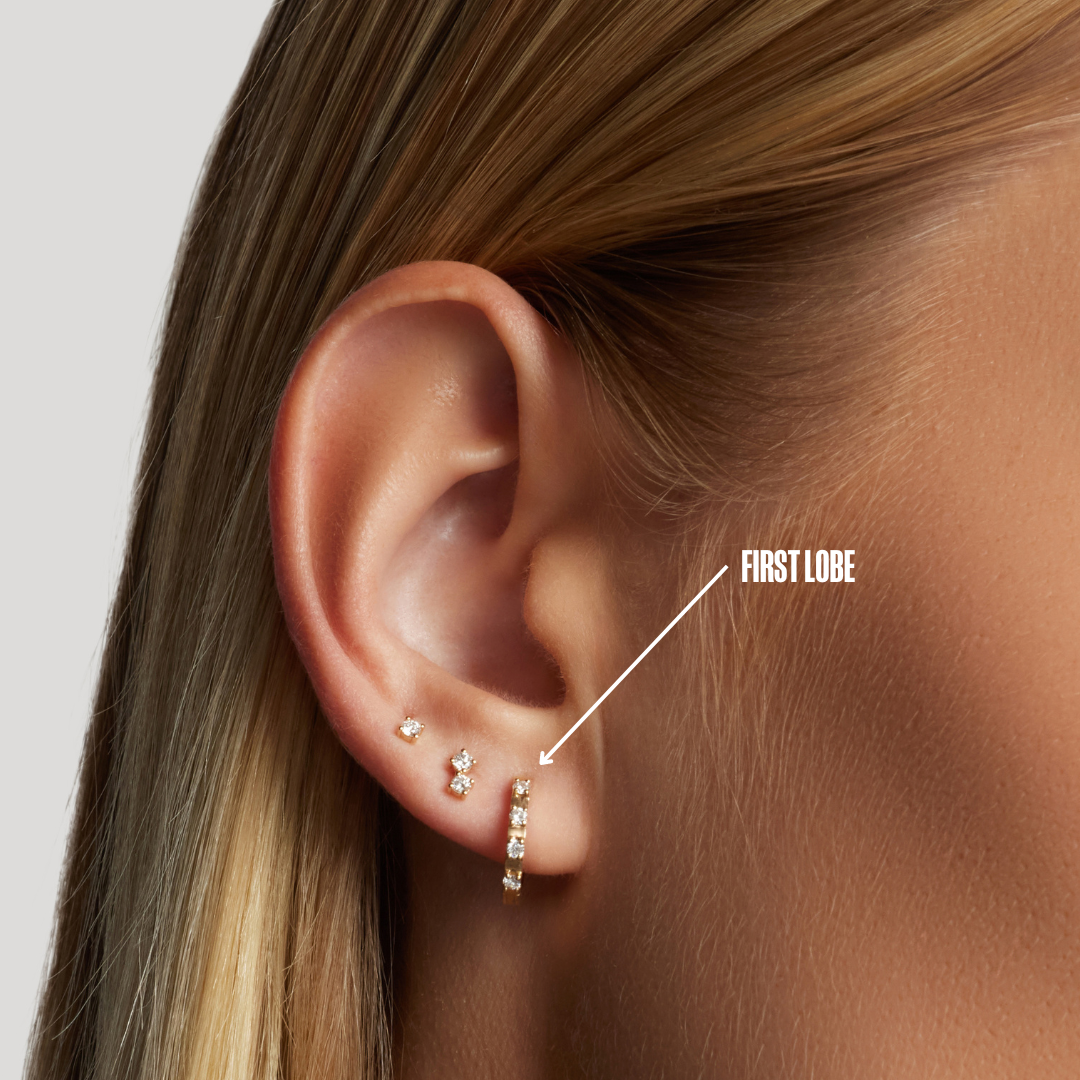
first lobe piercing
For most clients, the first lobe piercing marks the beginning of their jewellery journey. Positioned closest to the face, this piercing is ideal for first-timers and a beautiful foundation for future stacks.
Simple doesn’t mean plain — your first lobe piercing can be as expressive as you choose. Explore our Styling Guides to see our favourite ways to elevate your first piercing with refined, modern jewellery.
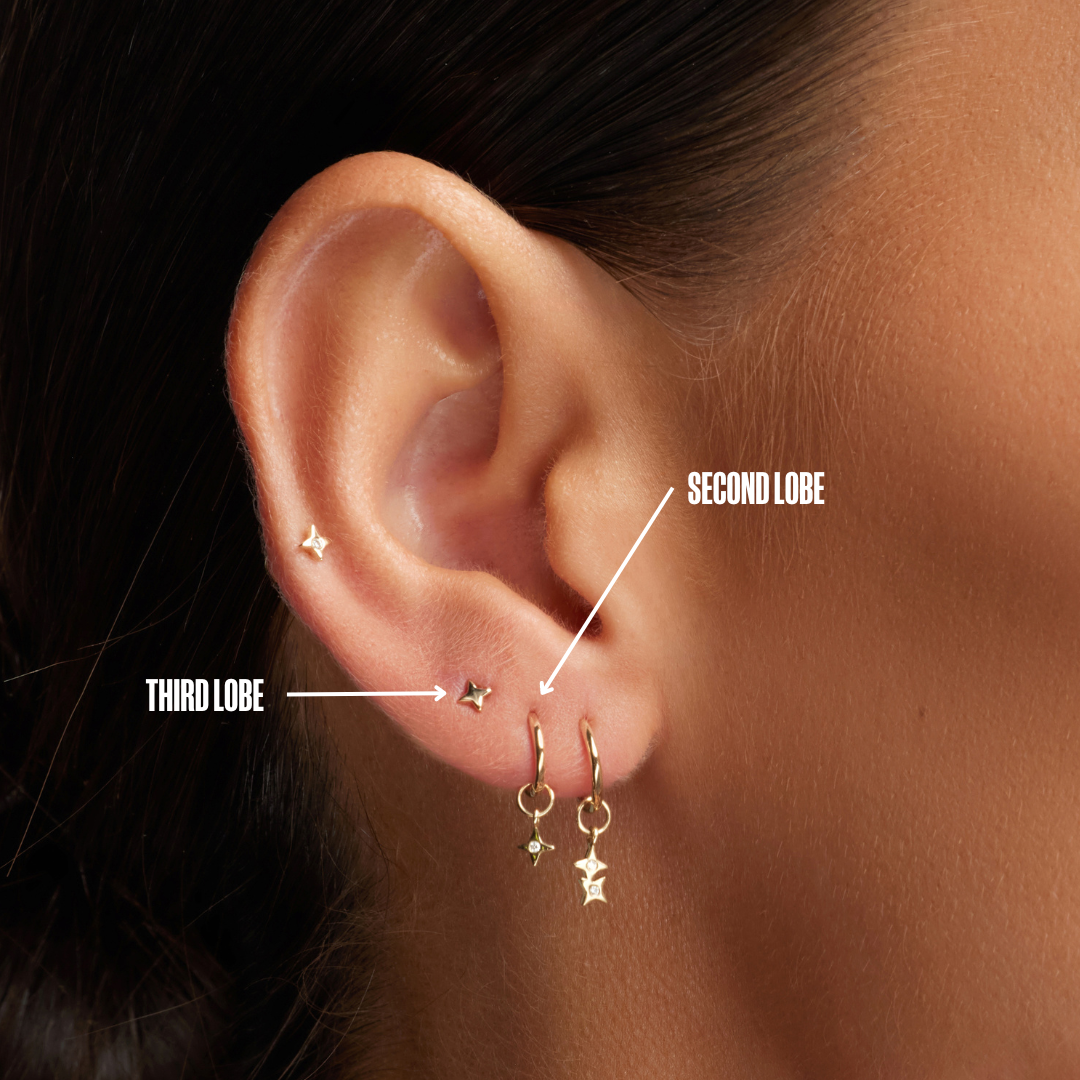
second and third lobe
Once you’ve fallen in love with your first, you may wish to continue your stack with a second or third lobe piercing. These piercings are typically aligned in a gentle curve, cascading along the lower half of the ear.
At Covetear, our piercers offer precision spacing and ear curation services, ensuring your piercings are placed harmoniously to suit your anatomy and achieve your desired aesthetic.
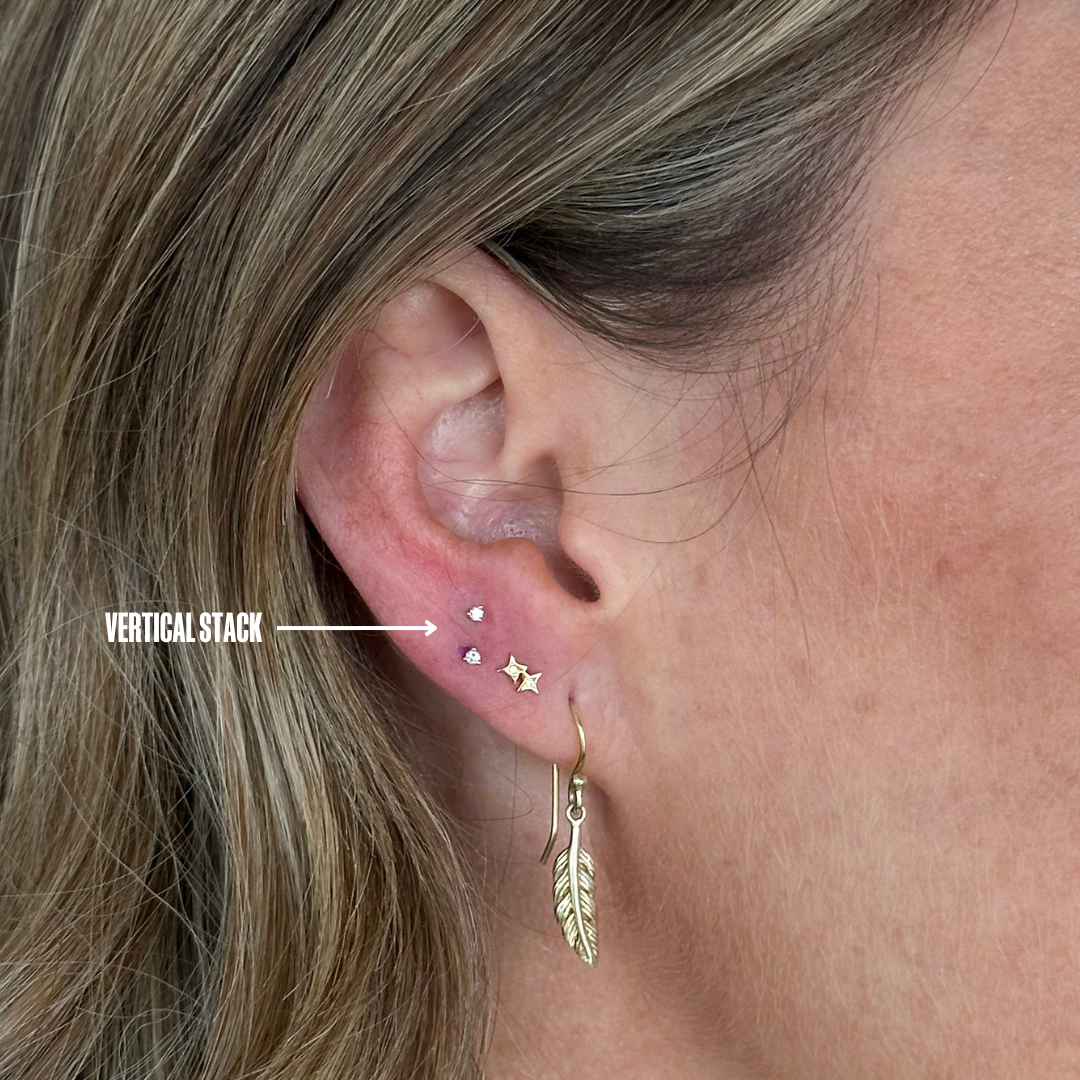
Vertical stack
A Vertical Stack offers a more distinctive, dimensional look. This placement is ideal for those with lower or stretched lobes, or for clients seeking a more artistic arrangement.
The piercings are placed either directly above or between two standard lobes, creating visual interest and balance. As not all ear anatomy allows for this configuration, we recommend booking a complimentary consultation with one of our expert piercers to assess suitability before proceeding.
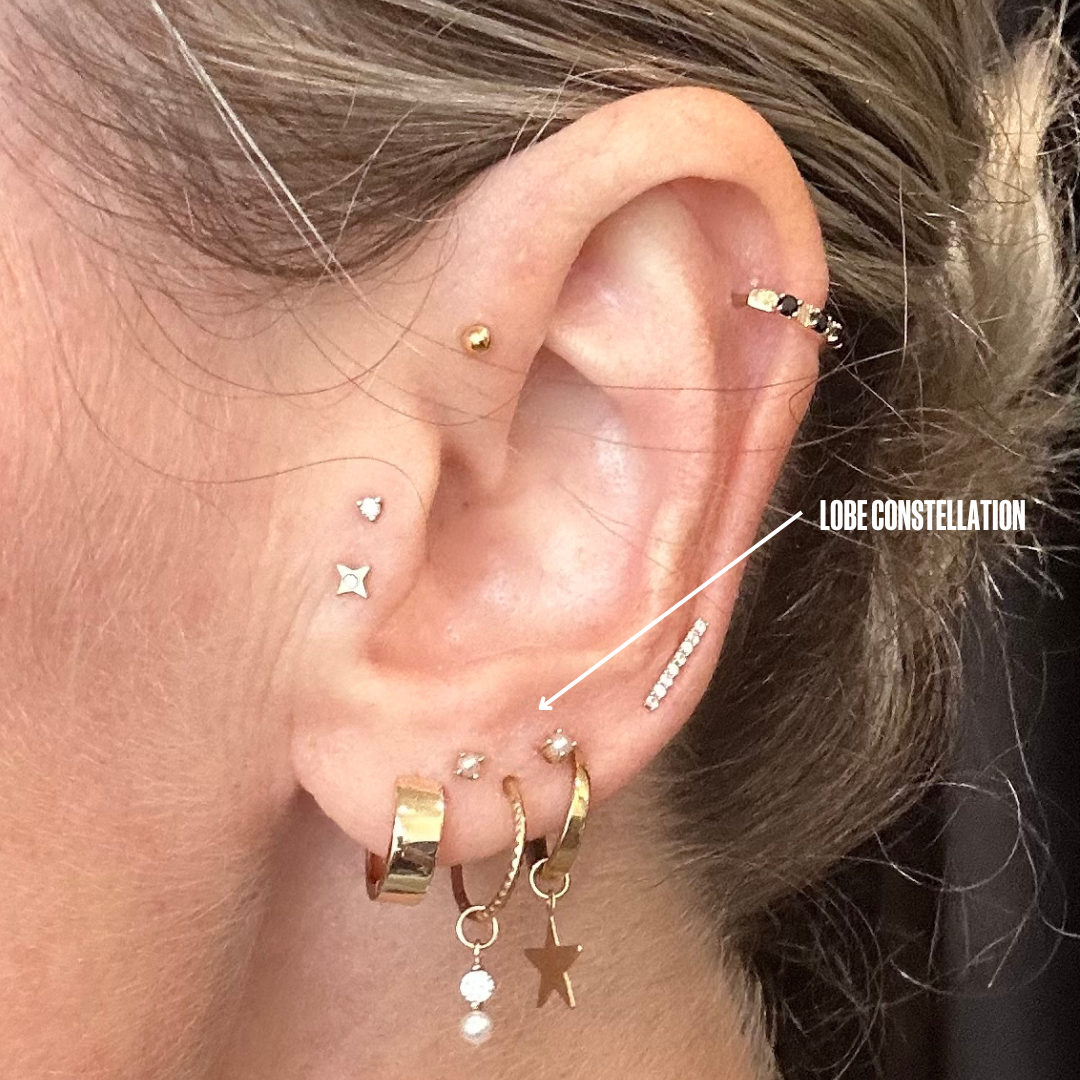
lobe constellation
For those who prefer a less structured approach, a Lobe Constellation offers an asymmetrical, celestial-inspired design. Each piercing is placed intentionally to mimic a cluster of stars, creating a truly individual result.
Our stylists and piercers collaborate closely during one-on-one Styling Consultations to design constellations that enhance your ear’s natural shape and reflect your personal style.
Lobe piercing procedure
Your appointment begins with the sterilisation of the ear using a medical-grade alcohol solution. Your piercer will then carefully mark the intended placement — considering your age, anatomy, and future styling goals — and confirm the markings with you before proceeding.
For multiple piercings, symmetry and spacing are measured with precision to ensure balance and comfort.
At Covetear, we pierce exclusively with single-use, sterile 18-gauge piercing needles — never piercing guns or pressure devices. Needles minimise tissue trauma, reduce the risk of infection, and allow for far greater control and accuracy.
Once the piercing is complete, your selected jewellery will be installed. Our piercing jewellery is designed with both form and function in mind — engineered for safety, comfort, and lasting style throughout the healing process and beyond.
Pain and healing time
Pain Guide: 4/10
Lobe piercings are among the least painful, as this area is soft and contains minimal nerve endings. Most clients describe the sensation as a quick pinch followed by mild warmth.
Healing time: approximately 3–6 months
First 72 hours: Some redness, swelling, light bleeding, and a warm pulsing sensation are normal.
Weeks 2–4: You may still feel slight pulsing or notice a clear fluid that dries into a light crust, particularly overnight — this is part of the natural healing process. Avoid touching or rotating the jewellery.
Weeks 5–12: The piercing may feel comfortable but is not yet fully healed. Continue avoiding friction and movement. This is often when your piercer may recommend downsizing your post to promote faster healing.
After 12 weeks: Patience is key. Even if the piercing appears healed, changing jewellery too early can lead to irritation, infection, or scarring. We recommend waiting a minimum of 16 weeks (4 months) before swapping to new jewellery.
If your jewellery is removed without replacement, the piercing can begin to close within a few hours — always keep jewellery securely in place to maintain your piercing.
Aftercare
Lobe piercings are relatively easy to care for, and consistent aftercare ensures optimal healing. At Covetear, we offer unlimited, complimentary Aftercare Appointments to support you through every stage of your healing journey.
Follow these essential steps:
- Do not touch your piercing unnecessarily. Always wash your hands thoroughly before handling the area.
- Clean with NeilMed™ Piercing Aftercare Spray. Hold 3–6cm away and spray both front and back of the piercing. Use a clean cotton tip to gently remove any discharge or residue.
- Pat the area completely dry. Avoid tissues, cotton buds, or other fibrous materials that can irritate the skin or introduce bacteria.
- Clean twice daily for 6–8 weeks, then once daily as the piercing continues to heal. Avoid sleeping directly on a fresh piercing to minimise swelling or irritation.
Pro tip: When washing your hair, if possible, use a removable shower head to gently rinse away any shampoo or conditioner before applying your aftercare spray. Product residue can increase the risk of irritation and infection.
is your piercing infected?
Here's what to do - The serious stuff
Successful healing depends on consistent aftercare and avoiding unnecessary contact with your piercing. If you experience symptoms beyond normal post-piercing healing — such as sudden or excessive swelling, bright yellow or green discharge, heavy bleeding, red streaks, fever, dizziness, or nausea — contact us immediately for professional advice.
While our piercers are always available for aftercare support seven days a week, we are not medical practitioners, and we recommend seeing a doctor if a bacterial infection is suspected.
TIME TO STYLE!
Once healed, your lobe piercing becomes the foundation of your ear curation. From refined diamonds to sculptural gold hoops, there are endless ways to style this versatile placement.
Whether you love symmetry or prefer a curated mix, our Classic Lobe Collection offers beautifully crafted pieces designed to elevate your everyday stack.
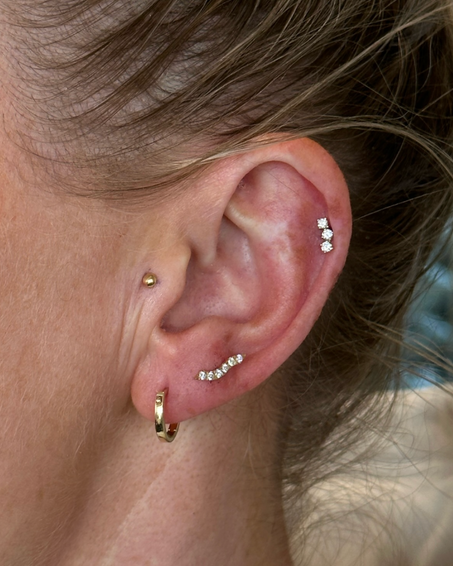
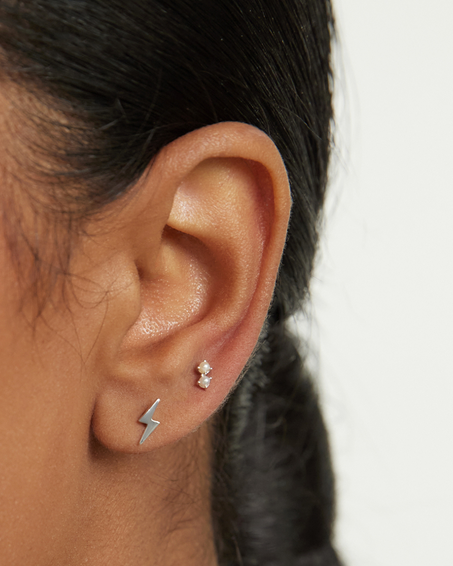
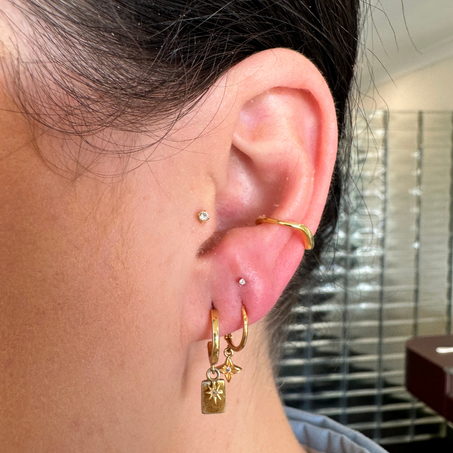
Classic Lobe Collection
-
14K Yellow Gold Labret Post
14K Yellow GoldRegular price $90.00Regular priceUnit price per -
NeilMed Piercing Aftercare Spray
Regular price From $13.95Regular priceUnit price per -
14K White Gold Labret Post
14K White GoldRegular price $95.00Regular priceUnit price per -
Petite Clicker Ring
14K Yellow Gold / SingleRegular price From $170.00Regular priceUnit price per
WANT MORE?
Looking to get some more piercings but not sure where to start? Here are our favourite piercing combos for a lobe piercing!
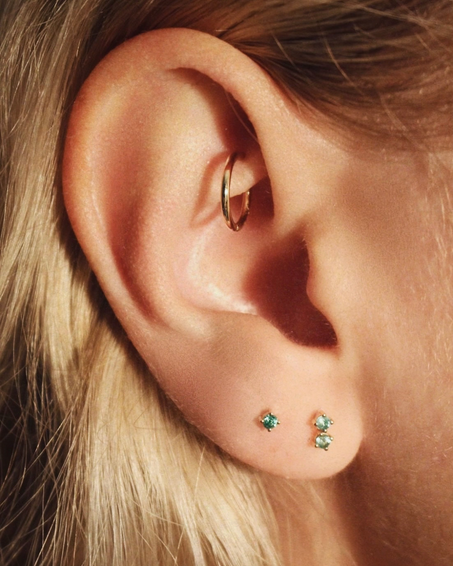
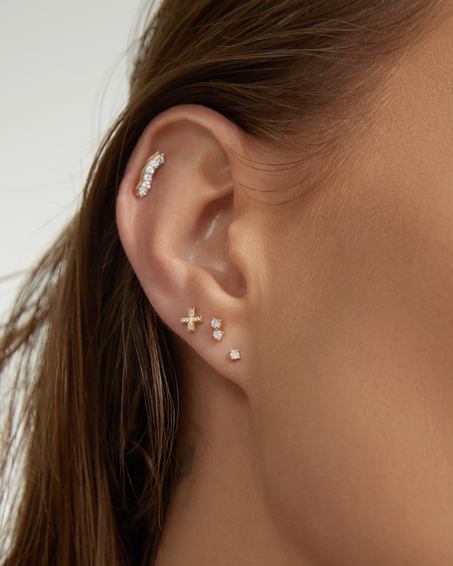
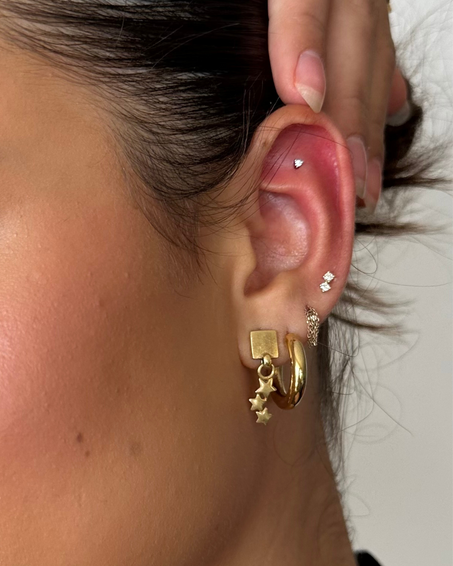
piercing and styling appointments
Ready for your next piercing? Book an appointment at one of our Covetear studios, where our expert piercers will guide you through your options and create a look that feels uniquely yours.
If you’re unsure which piercings or jewellery styles suit you best, our Deluxe Piercing Experience and Ear Curation Appointments offer one-on-one guidance and bespoke styling designed around your anatomy, aesthetic, and comfort.




